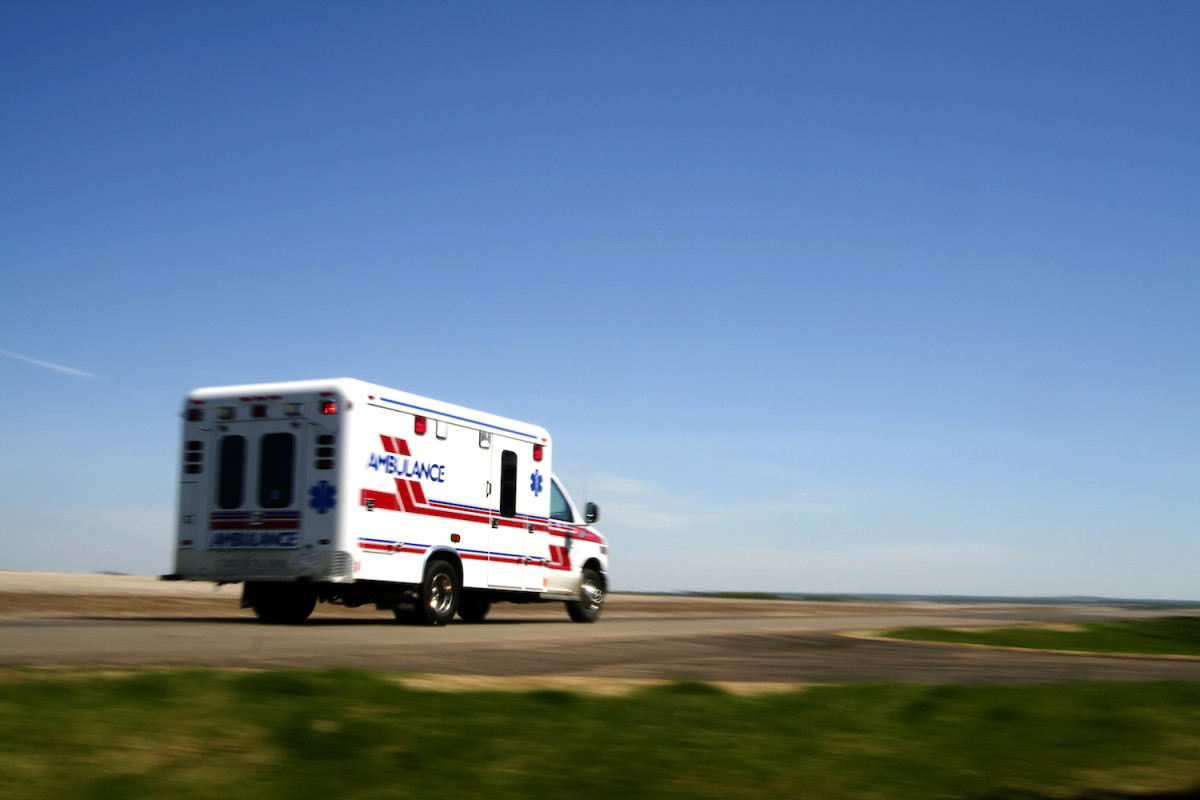Creating a clearer path to rural heart health
Rural health professionals are familiar with the challenges their communities face regarding care access and resources — but they also have the resilience to change the harsh realities that burden and shorten lives.
People in rural communities live almost three years fewer than urban dwellers, and they’re also more likely to experience and die early from heart disease or stroke, according to the American Heart Association.
The reasons are complex and not always understood.
"Everyone deserves access to high-quality cardiovascular care, and the association’s support for rural hospitals is a key piece of making that a reality." – Karen Joynt-Maddox |
Higher rates of tobacco use, physical inactivity, obesity, diabetes, and high blood pressure increase the risk for serious diseases. Rural communities face severe shortages of health care professionals, and people may live a long distance from hospitals or clinics.
 Karen Joynt-MaddoxOr they may reside in “food deserts,” which are remote from reliable access to healthy food. Furthering the issue, “food swamps” — where fast-food chains and convenience stores abound — make it even harder to get fresh produce and nutritious food.
Karen Joynt-MaddoxOr they may reside in “food deserts,” which are remote from reliable access to healthy food. Furthering the issue, “food swamps” — where fast-food chains and convenience stores abound — make it even harder to get fresh produce and nutritious food.
Working with people in rural communities, the American Heart Association and NRHA are working together to help change that.
The American Heart Association is focused on rural cardiovascular care because reducing disparities is central to the association’s vision of health and hope for everyone, everywhere. A 2020 presidential advisory on rural health emphasized the need for increased access to care, improved quality of care, and a more targeted approach to reducing risk factors.
"Everyone deserves access to high-quality cardiovascular care, and the association’s support for rural hospitals is a key piece of making that a reality," says Karen Joynt- Maddox, M.D., MPH, associate professor at Washington University School of Medicine and co-director of the Washington University in St. Louis Center for Advancing Health Services, Policy, & Economics Research.
"The registry helps clinicians understand and improve care patterns in the most up-to-date ways possible." – Karen Joynt-Maddox |
The need is critical. People who live in rural communities have a 40 percent higher likelihood of developing heart disease compared with their counterparts in small metropolitan and urban areas, a gap that has grown over the past decade. And with a crucial shortage of health care workers, many people are left vulnerable to increased morbidity and mortality that could be prevented.
The American Heart Association’s Get With The Guidelines program has helped many rural hospitals identify strengths and areas for improvement, as well as share model practices and learn about peer approaches through rural-specific learning networks. These learning networks support cardiac and stroke care quality, education, and risk factor prevention in rural areas across the nation.
 |
Get With The Guidelines is a health care-based quality improvement program designed to ensure patient care is aligned with the latest research-based guidelines to improve patient outcomes.
“Get With The Guidelines is unique because it is incredibly patient-centered and clinically relevant,” Joynt-Maddox says. “The registry helps clinicians understand and improve care patterns in the most up-to-date ways possible.”
"Participating [in Get With The Guidelines] has helped us make positive changes, such as improving workflows, editing our electronic health record system notifications, and making medication changes." – Taylor Lambert |
In 2023, Get With The Guidelines acute care quality programs were added to the Medicare Beneficiary Quality Improvement Program’s (MBQIP) suggested additional quality measures for Flex improvement activities.
 Taylor Lambert“Get With The Guidelines provides rural hospitals with crucial support for quality improvement activities, creating a learning network of peers to problem-solve in collaboration,” says Joynt-Maddox, who serves on the American Heart Association’s Advocacy Coordinating and Quality Oversight committees. She adds that the MBQIP Flex program is a testament to the power of this initiative to contribute to improving rural health outcomes and supporting rural facilities.
Taylor Lambert“Get With The Guidelines provides rural hospitals with crucial support for quality improvement activities, creating a learning network of peers to problem-solve in collaboration,” says Joynt-Maddox, who serves on the American Heart Association’s Advocacy Coordinating and Quality Oversight committees. She adds that the MBQIP Flex program is a testament to the power of this initiative to contribute to improving rural health outcomes and supporting rural facilities.
In 2022, new Get With The Guidelines rural-specific awards for coronary artery disease, heart failure, and stroke were developed, providing an equitable quality measure set for rural hospitals and health systems to pace towards. These awards are utilized to communicate their commitment to care excellence within their communities. The recognition uses a unique set of acute performance measures and a composite methodology to accommodate lower-volume care environments.
Through the association’s Rural Health Care Outcomes Accelerator, up to 700 rural hospitals across the United States can participate in Get With The Guidelines at no cost, access clinical consultants, and receive evidence-based education. The Accelerator works to ensure rural Americans have the best possible chance of survival and the highest quality of life attainable by promoting consistent, timely, and appropriate evidence-based care.
"The Get With The Guidelines rural stroke measures have allowed us to track our metrics and determine where there is opportunity for improvement." – Sandy Duha |
Accelerator participants also receive American Heart Association professional membership scholarships, courses through the association's Professional Education Hub, and clinical expert-guided toolkits that can easily be used by rural hospital teams to increase the adoption of evidence-based care opportunities into routine practice. These multimodal stroke, cardiac, and heart failure resources align with the association’s scientific recommendations and quality improvement, advanced certification, and outpatient programs. Engagement in these programs has been shown to translate into real change.
 Sandy Duha“Participating [in Get With The Guidelines] has helped us make positive changes, such as improving workflows, editing our electronic health record system notifications, and making medication changes,” says Taylor Lambert, RN, assistant director of nursing services at Columbia County Health System in Dayton, Wash.
Sandy Duha“Participating [in Get With The Guidelines] has helped us make positive changes, such as improving workflows, editing our electronic health record system notifications, and making medication changes,” says Taylor Lambert, RN, assistant director of nursing services at Columbia County Health System in Dayton, Wash.
“The Get With The Guidelines rural stroke measures have allowed us to track our metrics and determine where there is opportunity for improvement,” adds Sandy Duha, BSN, RN, acute hospital supervisor at Gundersen Boscobel Area Hospital and Clinics in Boscobel, Wis.
All rural hospitals participating in Get With The Guidelines are invited to join with peers in several ways including a Rural Community Network and quarterly stroke and cardiac rural learning collaboratives. Hospitals also have access to other rural clinical experts and thought leaders at webinars and conferences.
“Addressing growing inequities in outcomes based on rurality is a priority for the American Heart Association, and Get With The Guidelines is a wonderful example of putting this commitment into action,” says Joynt-Maddox.
Closing the gap in rural outcomes
Recent data indicates that rural residents are at 30 percent higher risk of stroke, 40 percent more likely to develop heart disease, and live an average of three years fewer than urban counterparts.
NRHA and the American Heart Association are committed to bringing equitable care to all.
That’s why up to 700 rural hospitals will receive no-cost access to add new Get With The Guidelines quality programs for coronary artery disease, heart failure, and stroke.
